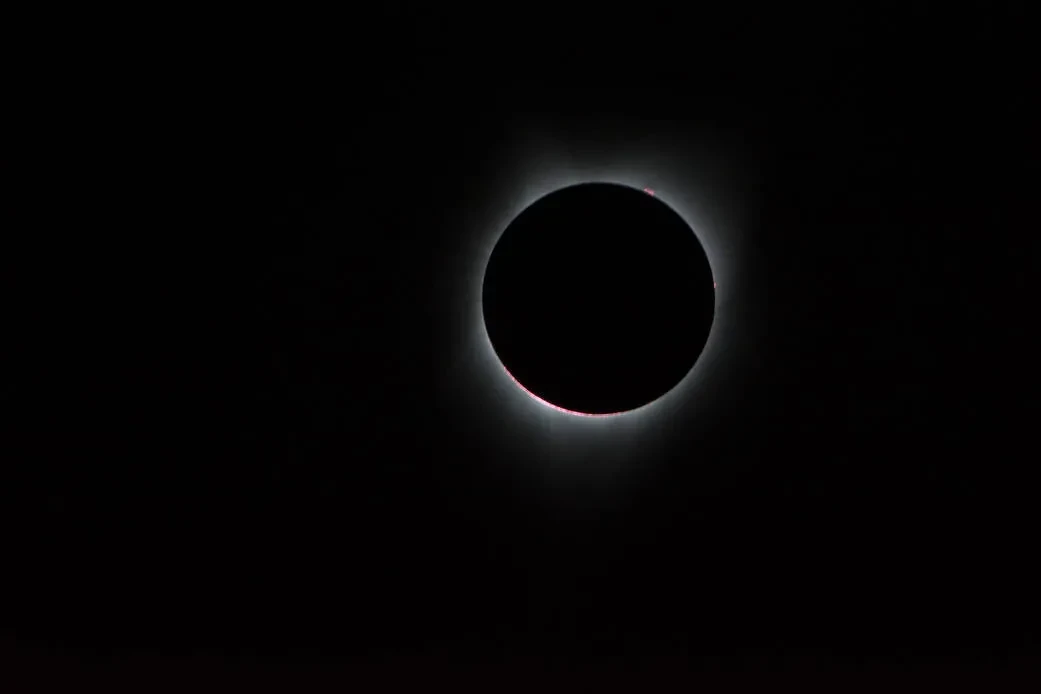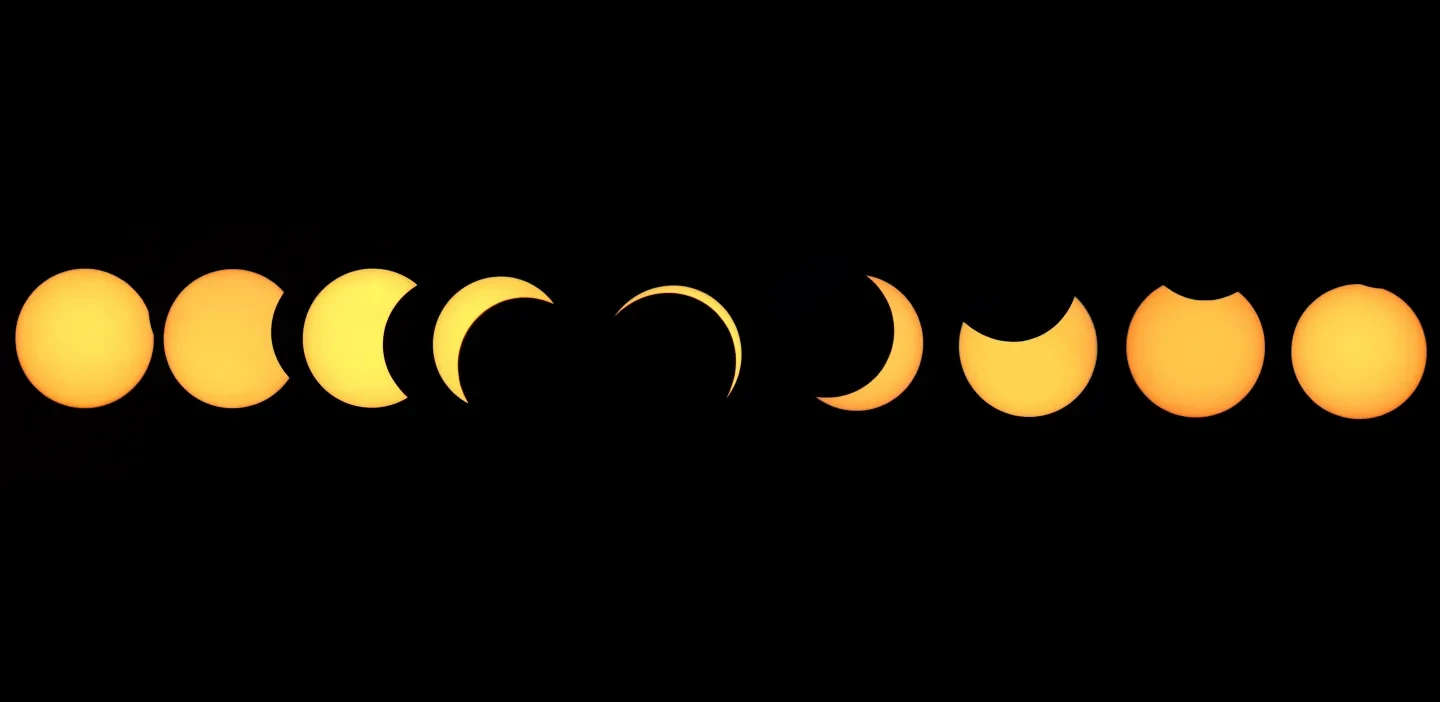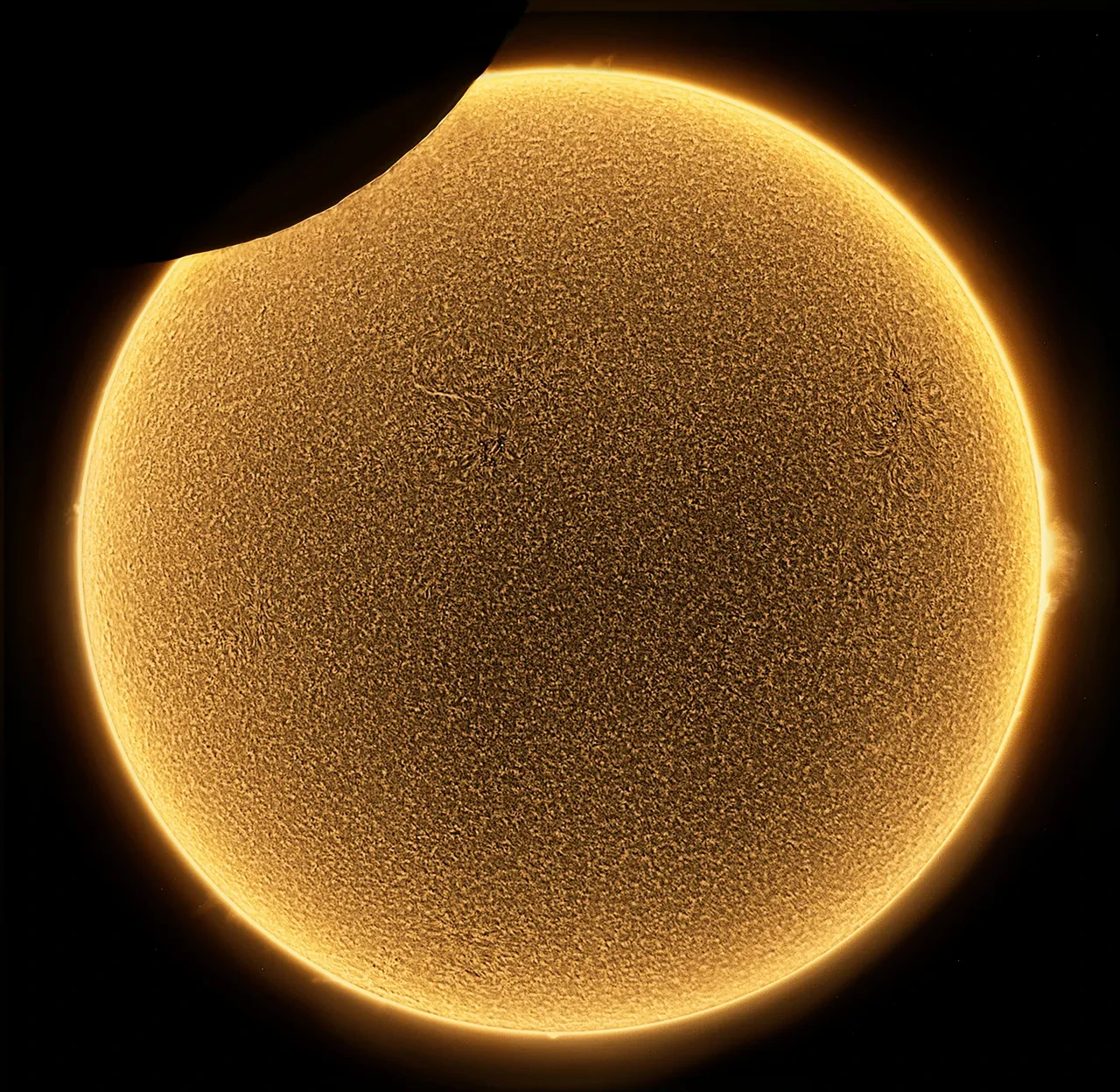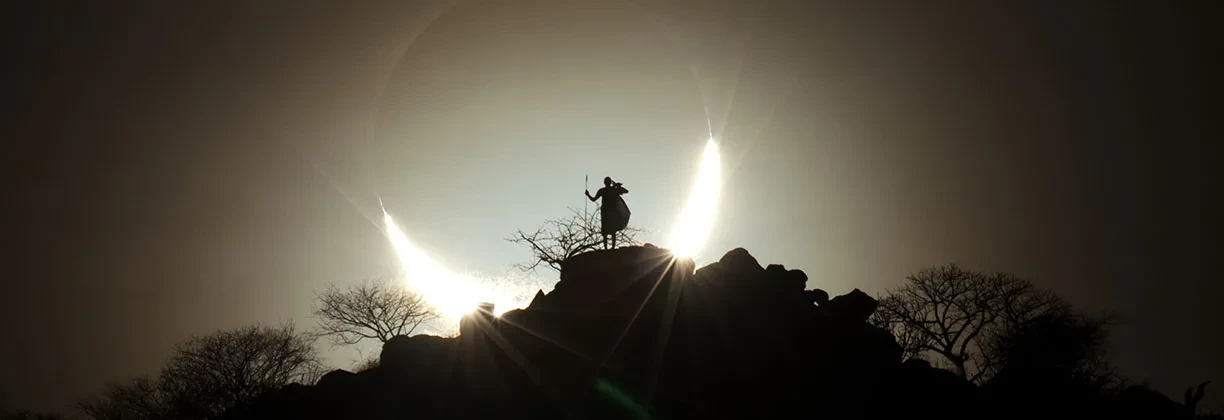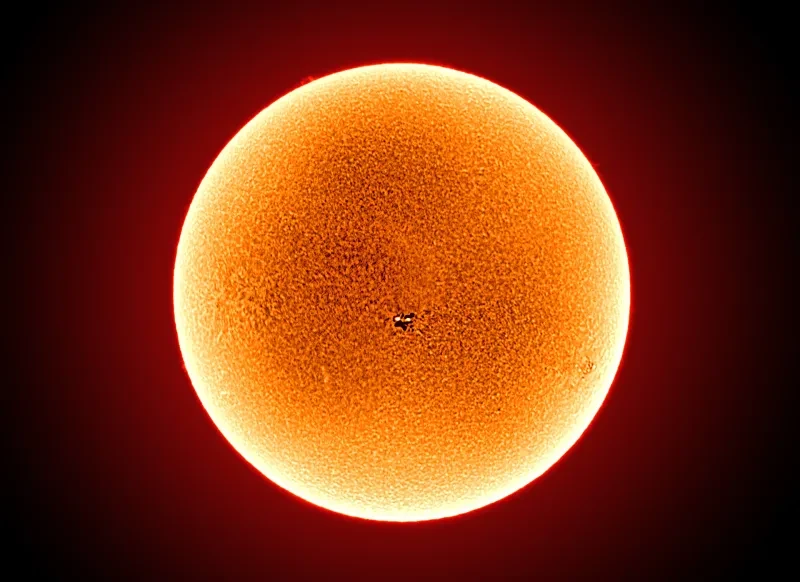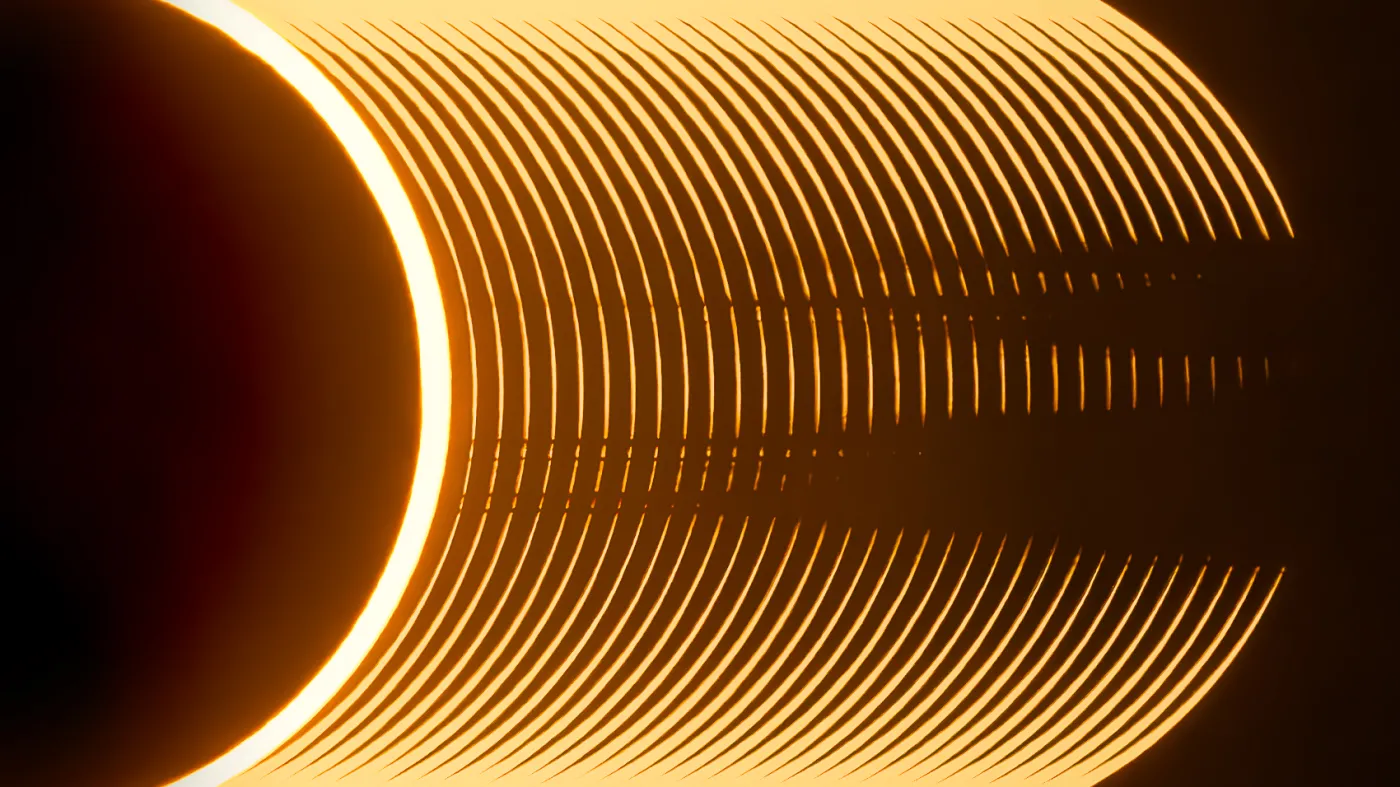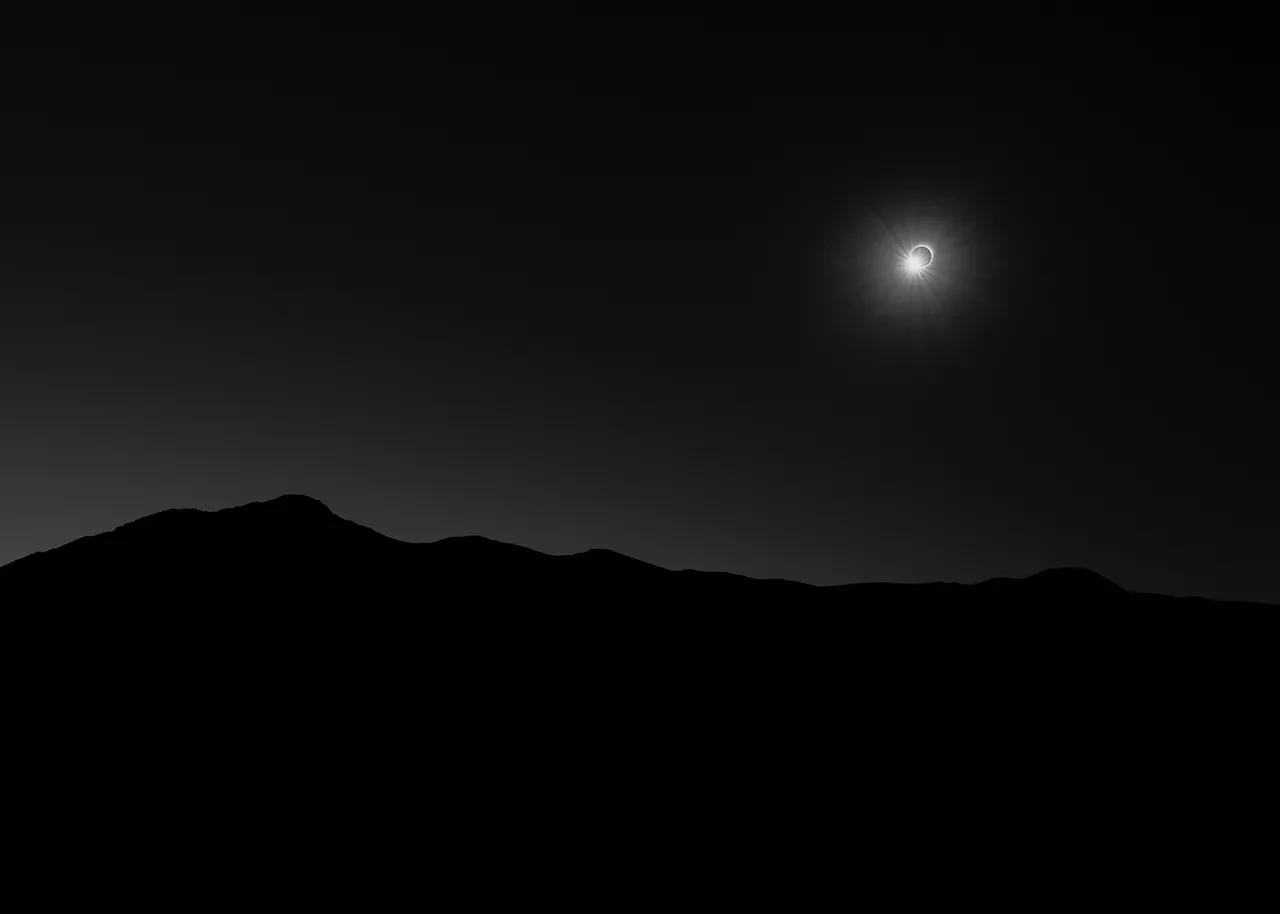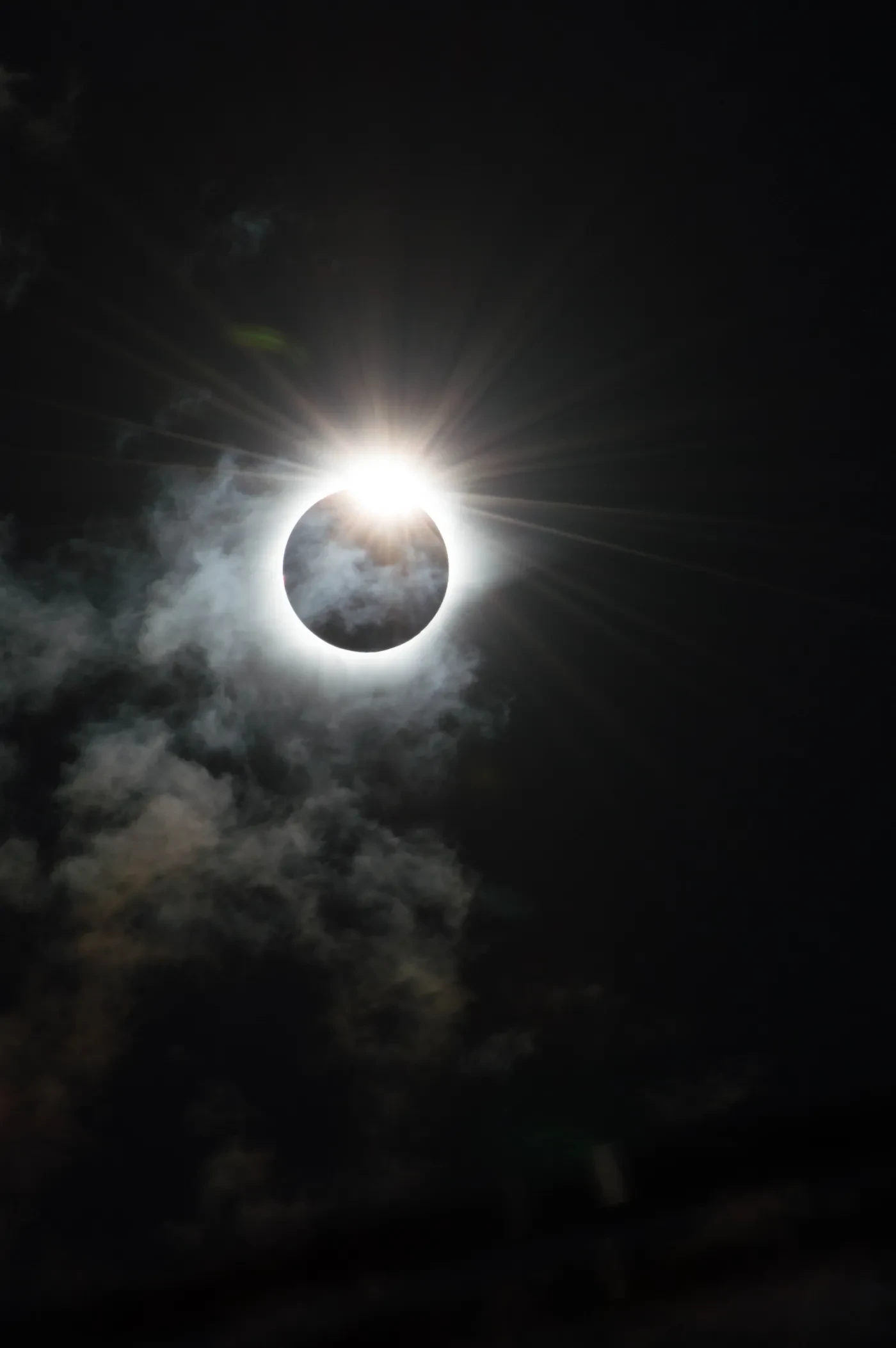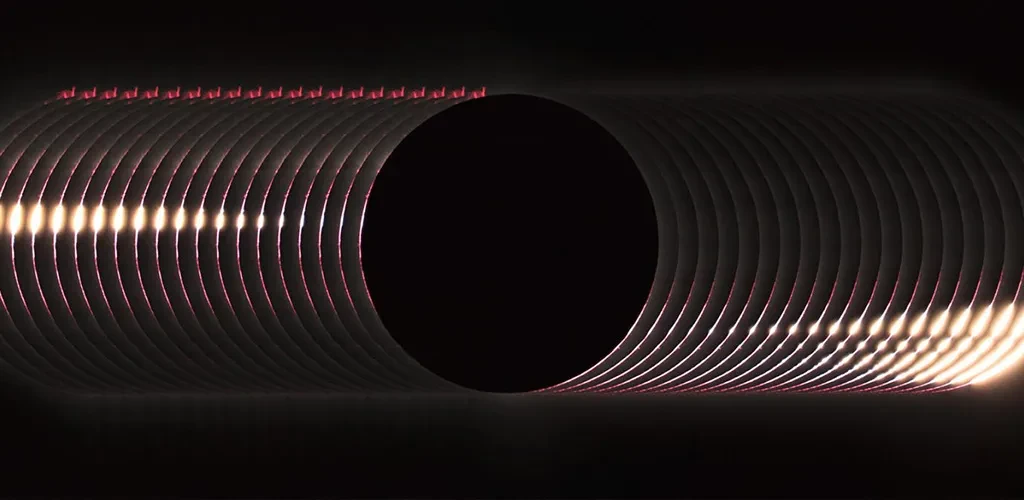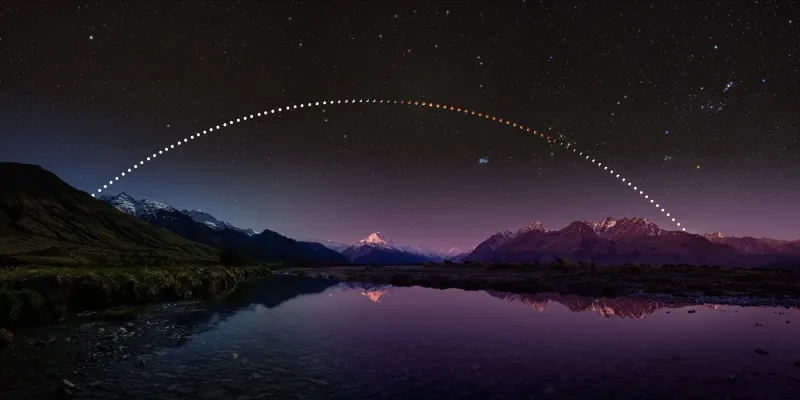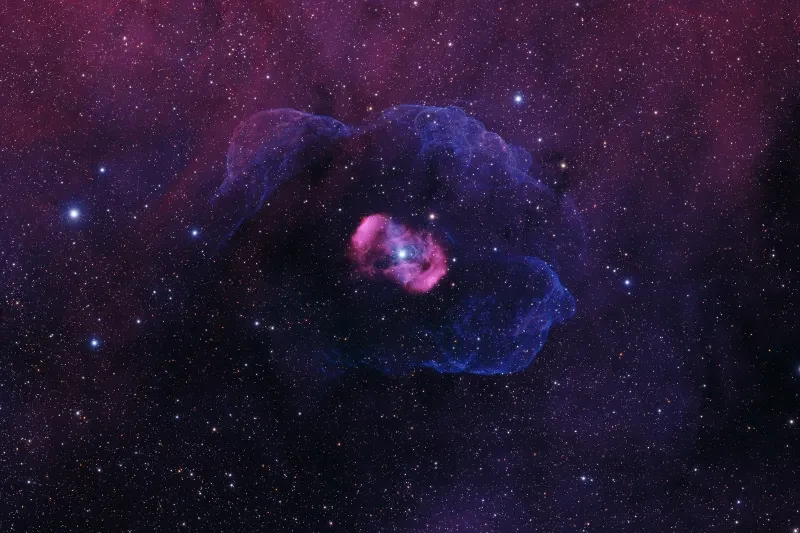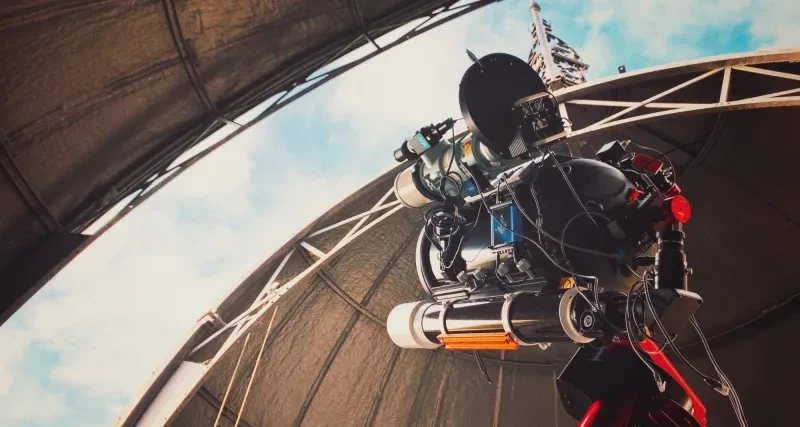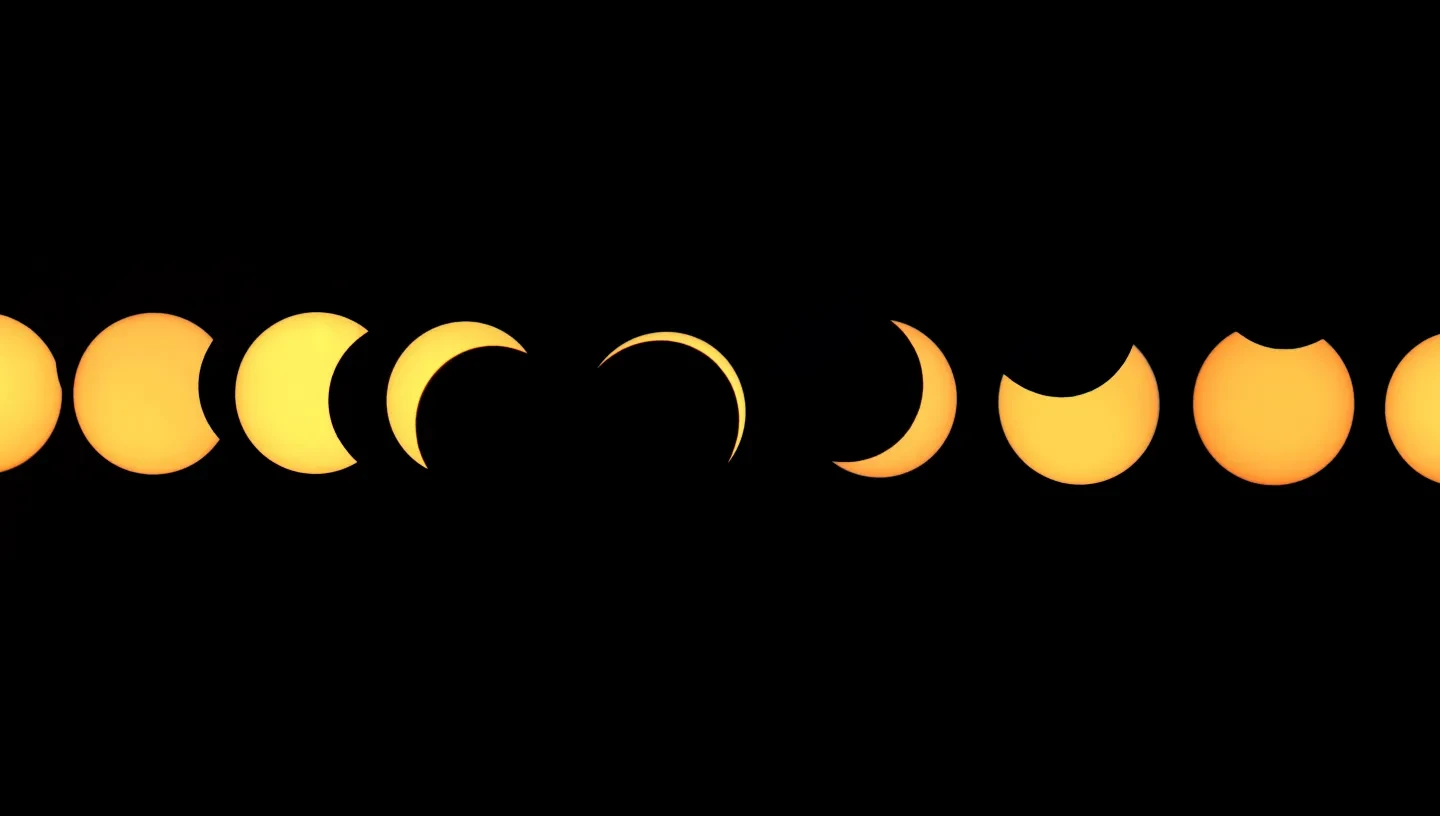
What is a solar eclipse?
An eclipse of the Sun occurs when the Moon moves directly between the Sun and the Earth.
During a solar eclipse, the Earth is basically in the Moon's shadow.
Because the Moon is much smaller than the Earth, however, its shadow only covers a small area of the Earth's surface. Any solar eclipse therefore will only be visible from a certain region on Earth.
Learn more about solar eclipses with astronomers at the Royal Observatory Greenwich.
What different types of solar eclipse are there?
The type of solar eclipse depends on the relative positions of the Sun, Earth and Moon, as well as where exactly on Earth you're watching from.
Total solar eclipse
A total solar eclipse happens when the Moon completely covers the Sun, and observers are within the darkest part of the Moon's shadow (its umbra). Areas covered by partial shade (its penumbra) witness a partial eclipse.
Annular solar eclipse
When the Moon is not at the point in its orbit where it's closest to Earth, its apparent diameter is less than that of the Sun. During an annular eclipse, even where the Moon's disk covers the Sun centrally, the outer ring of the Sun's disk is still visible. The Sun's edges visible around the Moon is called the annulus (derived from the Latin for 'ring') and is also called a 'ring of fire'.
During an annular eclipse, spectators may also see 'Baily's beads' around the edge of the Moon. This is when the Moon's mountains and valleys are silhouetted against the Sun.
Partial solar eclipse
A partial eclipse happens when the Moon passes between the Sun and Earth but the Sun, Moon, and Earth are not perfectly aligned. This means that only part of the Sun is hidden by the Moon.
Hybrid solar eclipse
Hybrid solar eclipses are quite rare. This happens when the eclipse is annular from some locations, and total from other locations.
Never miss a shooting star
Sign up to our space newsletter for exclusive astronomy news, guides and events
When is the next solar eclipse in the UK?
There are between two and five solar eclipses each year with a total eclipse taking place every 18 months or so.
Total solar eclipses are seen every 400 years from any one place on the surface of the Earth.
Solar eclipses in the UK
When is the next solar eclipse in the UK? Find out below. Exact times apply to London.
The next total solar eclipse won't occur in the UK until 2090!
| Date | Eclipse type | What you'll see |
|---|---|---|
| 12 August 2026 | Partial solar eclipse | This partial eclipse will almost be total, with around 90% of the Sun being obscured by the Moon at the maximum. It'll begin at 6.17pm BST, with maximum at 7.13pm. |
| 2 August 2027 | Partial | The partial eclipse will begin around 9am BST in London. It will reach maximum at 10am and end around 11am. At maximum roughly 45% of the Sun will be in shadow. |
Solar eclipses worldwide
| Date | Eclipse type | Location |
|---|---|---|
| 17 February 2026 | Annular | Antarctica, Partial in South Africa |
| 12 August 2026 | Total | Total in Greenland, Iceland, Portugal, Russia and Spain Partial in most European countries including the UK, as well as parts of Canada and northern Africa |
| 6 February 2027 | Annular | Argentina, Benin, Brazil, Chile, Ghana, Ivory Coast, Nigeria, Togo, Uruguay |
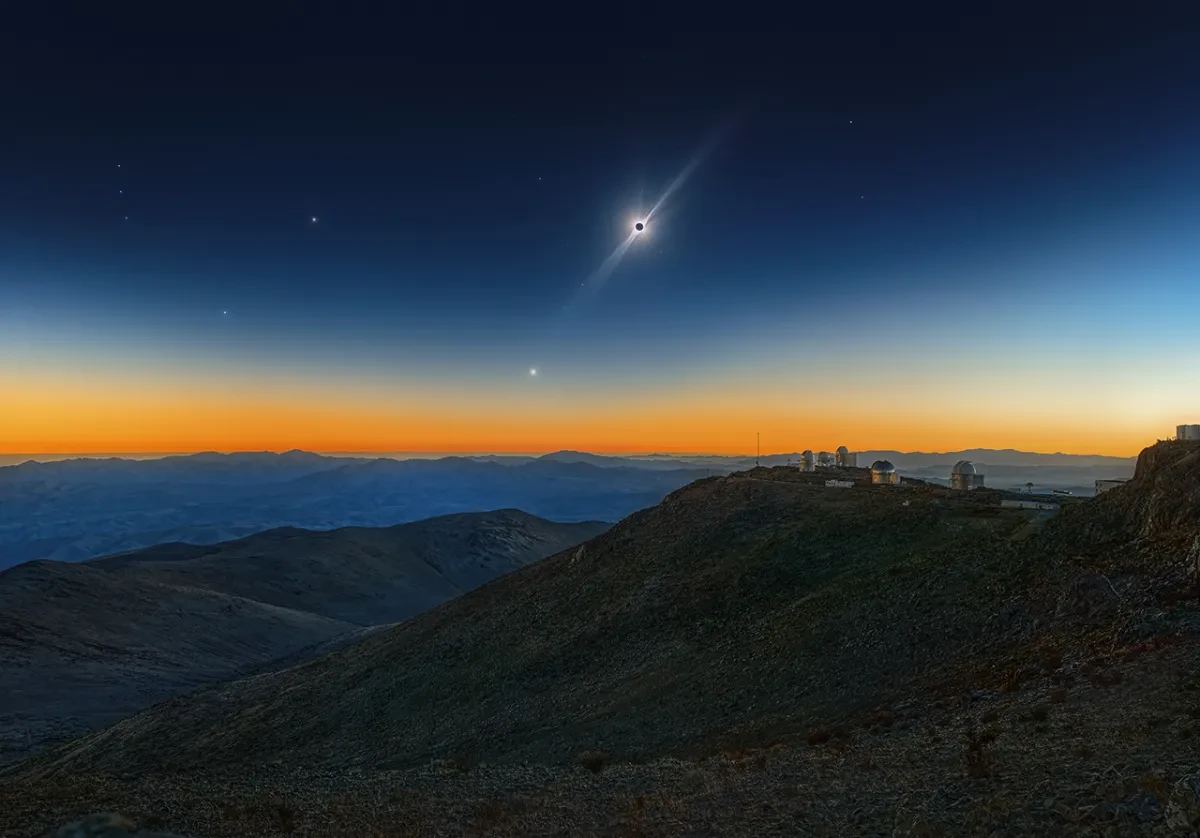
When was the last total solar eclipse in the UK?
The last time the path of an eclipse's totality went over the UK was in 1999. This was one of the most viewed total solar eclipses due to its path falling on areas of high population density.
However, many areas of Western Europe were affected by poor visibility due to clouds. In some places, the clouds frustratingly parted after the eclipse had passed, but others were luckier with the clouds parting just in time.
Many people went to view the eclipse in Cornwall, the only place in the UK to witness totality, with the BBC broadcasting from Cornwall's western end where the eclipse would come first.
Image: Total Solar Eclipse, Venus and the Red Giant Betelgeuse © Sebastian Voltmer
How can I see a solar eclipse?
As always, you should never look directly at the Sun without the appropriate filters.
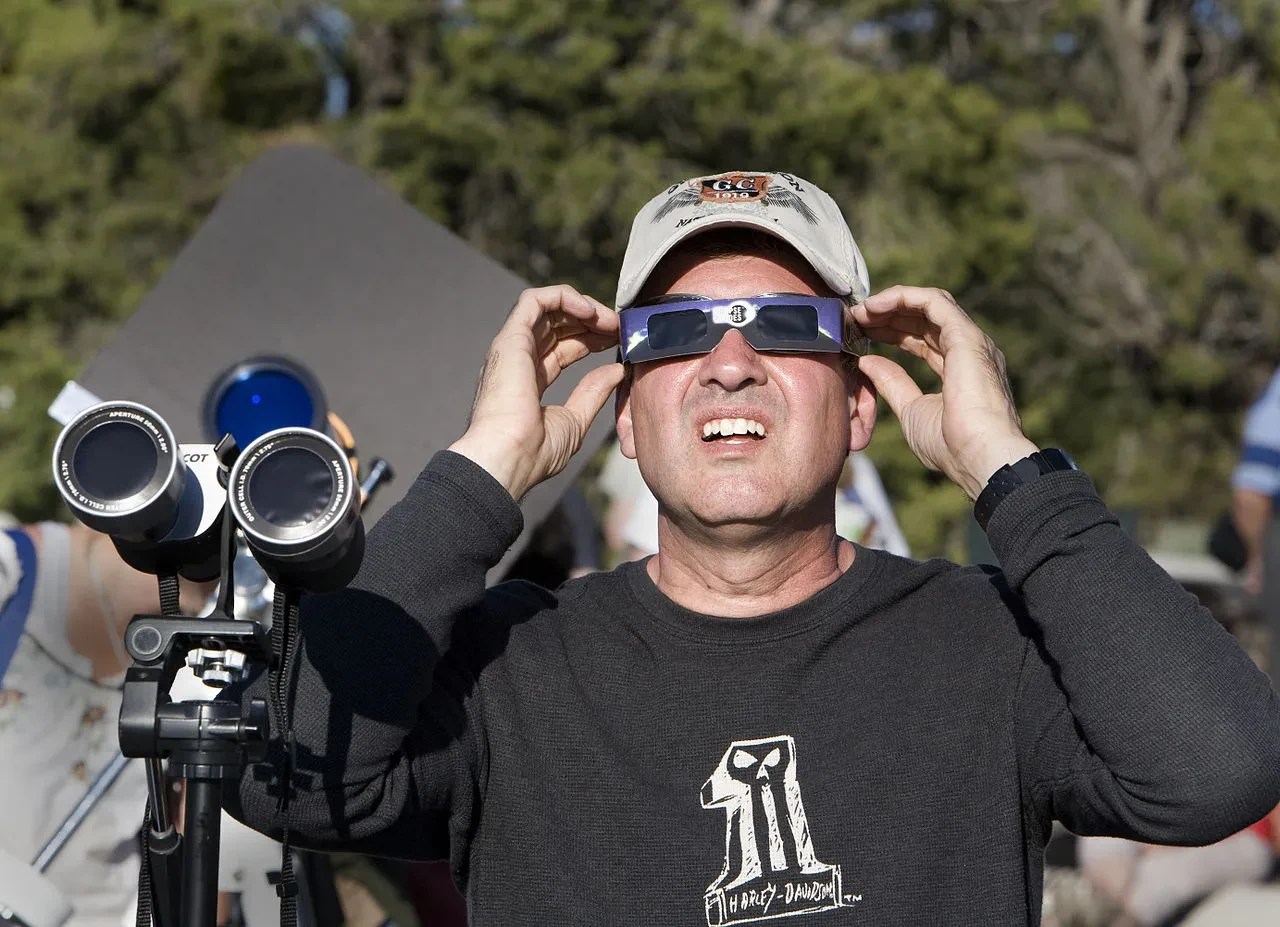
If you want to look at an eclipse directly and safely there are a couple of options.
- Check and see if your local astronomical society is hosting a solar eclipse event as they will have many instruments specifically for solar viewing or telescopes that have been fitted with the right filters.
- If you can’t get out to these events and still want to look at the eclipse directly, you can buy solar eclipse glasses. These must be the real deal, not 3D glasses or anything similar.
- The safest, cheapest and arguably the most convenient way to view the event is by pinhole projection. This is extremely safe as there is no need to look directly at the Sun, and the display can be shared by a few people together.
How to make a pinhole projector
- Make a hole in a piece of card.
- Hold the card up to the Sun, and hold a piece of paper behind the card.
- See the shape of the Sun projected onto the paper - a small version of the event!
Photos of solar eclipses
Eclipses in myth and history
Ancient myths from many cultures around the world have explained eclipses as a time when an animal or demon eats the Sun or Moon.
Even today, modern superstitions exist surrounding eclipses, with some believing that they could harm pregnant women. Scientists have debunked these modern superstitions; the only precaution you need to take is protecting your eyes when viewing the Sun.
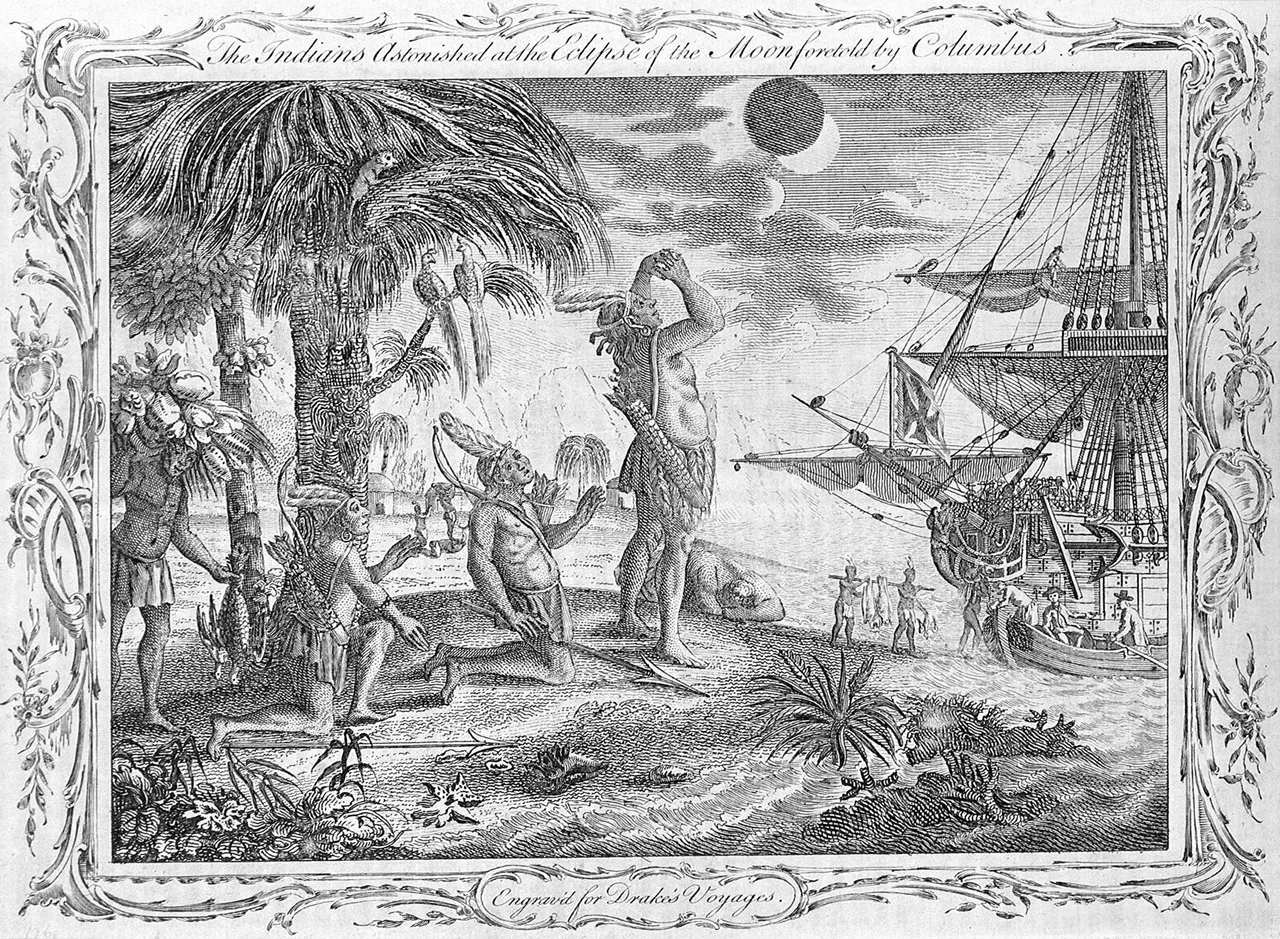
-
For the Ancient Greeks, an eclipse was a bad omen, spelling death and destruction caused by an angry god.
-
The Pomo, an indigenous people from the north western United States, tell a story of a bear who started a fight with the Sun and took a bite out of it.
-
When on an island northeast of Cuba, Christopher Columbus correctly foretold a total lunar eclipse, using his knowledge to play on the native people’s superstitions and persuade them to give him and his men food.
-
Eclipse has been a popular name for ships in the Royal Navy, with eight in total taking the HMS Eclipse title. The first of these ships was a 12-gun, 169-ton gunboat launched at Blackwall on 29 March 1797. The most recent was an E-class destroyer launched at Denny on 12 April 1934 and sunk by a mine in the Aegean Sea on 24 October 1943. This is its boat badge, held in our collection at the National Maritime Museum.
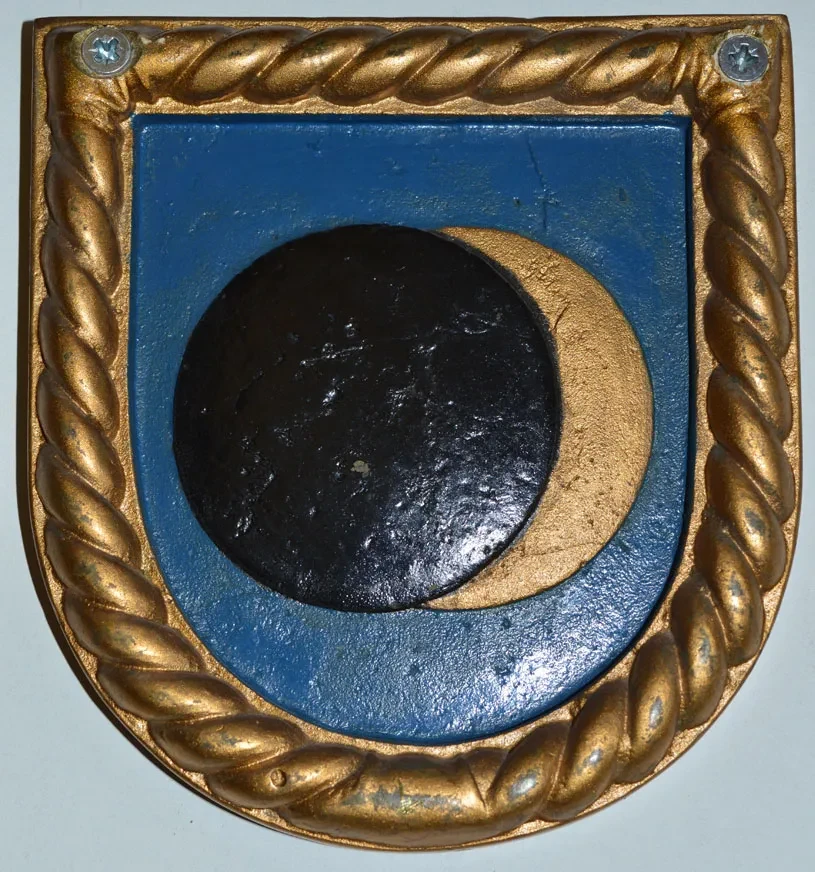
Main image: The Annular Eclipse over Lahore © Roshaan Nadeem | Astronomy Photographer of the Year 2021
